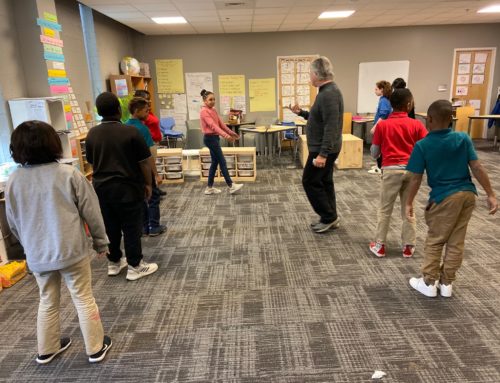By Eliana Hudson, UMKC communications intern
“Block, stick, and dot! Block, stick, and dot! The block is hundreds, the stick is tens, the dot is one. Block, stick, and dot. Block, stick, and dot,” about twenty second graders chant while clapping their hands in tune with the beat.
Standing at the front of the classroom is Ben, who stares at the whiteboard and thinks about the math problem Miss Osei has posed. “820” is written in the middle of the board and Ben’s work is beneath it. Three squares, an addition sign, three straight lines, two dots, and an equal sign are his visual representations of “820.”
“Do you have a question for Ben?” Miss Osei asks the class. “Ben is our teacher for today.”
Eager hands raise and Miss Osei reminds them about how they answer questions using phrases such as “I think,” “I guess,” and “I predict.”
A student asks Ben why he drew three blocks when the 8 is in the hundreds place. Ben looks back at his work, ponders for a moment, draws five additional blocks and erases a line and the two dots. Turning back around, he proudly shows his work.
“After working together,” Miss Osei says, “we helped Ben think through the problem and get a new answer. But, it’s not about the answer, it’s about the process. Let’s let Ben know he did a good job.”
The students smile and break out into a new chant, congratulating Ben on his hard work.
“Good job, good job. Good job, good job. G-o-o-d j-o-b. Good job, good job!”


Leave A Comment
You must be logged in to post a comment.